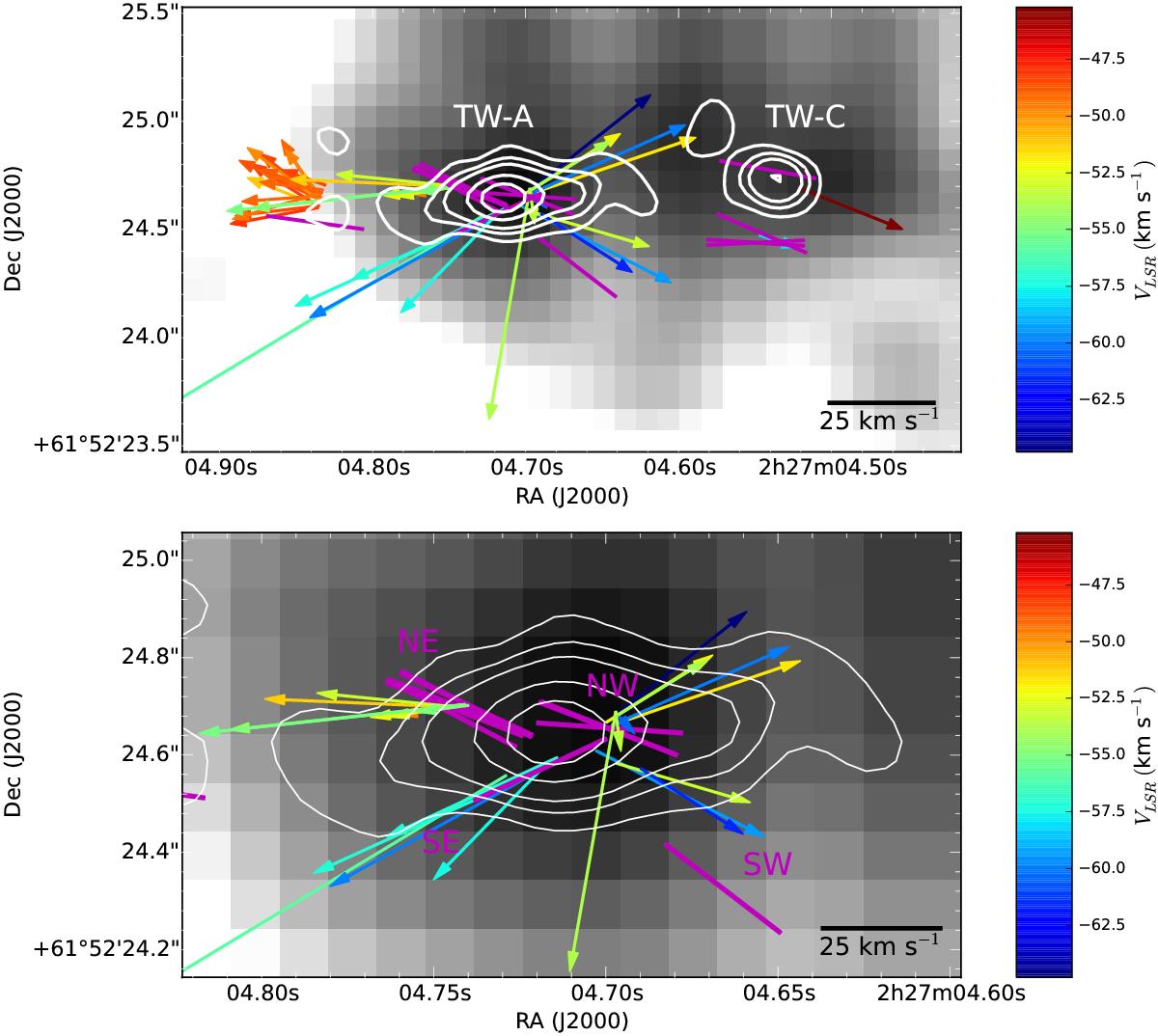Fig. 3

Comparison between the magnetic field orientations of H2O masers (purple segments) measured in this work and proper motions of H2O masers (arrows) measured by Hachisuka et al. (2006). The 8.4 GHz emission imaged with the VLA by Wilner et al. (1999) (white contours) is overplotted onto the 1.4 mm continuum emission mapped with the PdBI by Wyrowski et al. (1999) (gray scale). Colors denote l.o.s. velocity (color scales on the right-hand side) and the scale for the proper motion amplitude is given in the lower right corner (both in km s-1). Top panel: the outward proper motions of the masers to the east and west suggest the presence of a collimated bipolar molecular outflow along E-W (the axis of the synchrotron jet), whereas the proper motions of the masers closer to the radio continuum peak identify a wider-angle biconical outflow driven by the TW-A high-mass protostar. The western component identifies TW-C, the binary companion of TW-A (e.g., Wyrowski et al. 1999; Zapata et al. 2011). Bottom panel: expanded view towards the core of the synchrotron jet, showing more in details the relation between the H2O masers magnetic field orientations (purple segments) and proper motions (arrows). There are four main knots of masers, located towards NE, NW, SE, and SW, with respect to the radio continuum peak (labeled accordingly in the figure). The proper motions identify a biconical, bipolar molecular outflow driven by the TW-A high-mass protostar. We note the misalignment between magnetic field and velocity vectors, particularly in the NE and NW knots (see Sect. 4.2 for an explanation).
Current usage metrics show cumulative count of Article Views (full-text article views including HTML views, PDF and ePub downloads, according to the available data) and Abstracts Views on Vision4Press platform.
Data correspond to usage on the plateform after 2015. The current usage metrics is available 48-96 hours after online publication and is updated daily on week days.
Initial download of the metrics may take a while.


